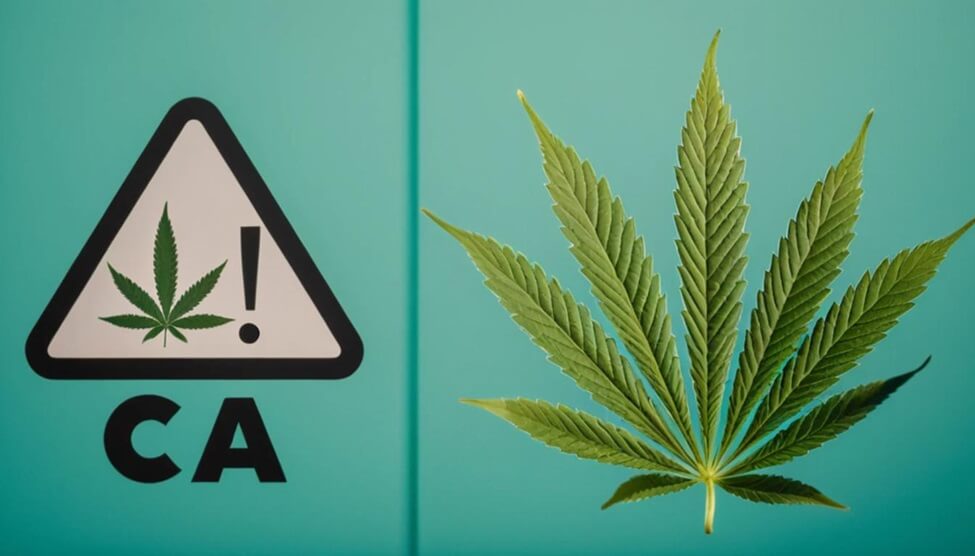Navigating the world of cannabis products can be like trying to find your way through a maze blindfolded. With the burgeoning variety at your local cannabis dispensary, understanding cannabis labels has never been more crucial. These labels pack a wealth of information, from potency to ingredients, and mastering their language is key to making informed choices. It’s not just about choosing the right buzz; it’s about knowledge and safety in an ever-evolving industry.
Understanding Cannabis Labeling
Why Labels are Important
Cannabis labels serve as a crucial bridge between producers and consumers, offering essential details about the product. They provide information on potency, strain, origin, and ingredients, which is particularly vital for consumers with allergies or dietary restrictions. Accurate labeling helps consumers make informed decisions, ensuring they select products that meet their needs, whether for medical or recreational purposes. Labels also play a pivotal role in safety by preventing overconsumption and providing lab testing results to assure product quality.
Regulatory Standards
Proper packaging and labeling are mandatory to comply with the diverse regulations governing the cannabis industry, which can vary significantly by jurisdiction. These regulations may include specific requirements for child-resistant packaging, tamper-evident features, and clear warning labels. Failure to adhere to these standards can lead to significant fines, product recalls, or even the suspension of business licenses. Moreover, cannabis products must display a universal symbol indicating the presence of THC, which helps in quick identification and promotes safe consumption practices.
The Basics: What You’ll Find on a Cannabis Label
Cannabis labels are designed to give you essential information about the product you’re about to enjoy. Here are the key elements you’ll typically find:
Strain Name
Cannabinoid Content
Terpene Profile
Batch Number and Harvest Date
Producer Information
Usage Instructions
Warnings and Legal Disclaimers
Let’s explore each of these components in more detail.
Strain Name
The strain name is your first clue about the cannabis experience awaiting you. Strains like “Blue Dream” or “OG Kush” are not just marketing terms; they provide insights into the effects, flavors, and origins of the cannabis. Indica strains are generally more relaxing, sativas more energizing, and hybrids offer a mix of both.
Cannabinoid Content
This section is crucial. Cannabinoids are the chemical compounds in cannabis that interact with your body’s endocannabinoid system to produce various effects. The most common cannabinoids you’ll see listed are:
THC (Tetrahydrocannabinol): The main psychoactive component. Higher THC percentages (usually 15-30%) mean a stronger high.
CBD (Cannabidiol): Known for its therapeutic benefits without the high. Common in medical marijuana.
Some labels might also list minor cannabinoids like CBN, CBG, and THCV, each contributing unique effects.
Terpene Profile
Terpenes are aromatic compounds found in many plants, including cannabis. They play a big role in the plant’s smell and flavor, and they also influence the high. Common terpenes include:
Myrcene: Earthy and musky, with relaxing effects.
Limonene: Citrus-scented, with uplifting and mood-enhancing properties.
Pinene: Pine-scented, promotes alertness.
Understanding terpenes can help you choose strains that match your desired experience.
Batch Number and Harvest Date
The batch number allows you to trace the product back to its specific production run, which is useful for quality control and any potential recalls. The harvest date gives you an idea of the product’s freshness. Cannabis, like any plant product, can degrade over time, so fresher is usually better.
Producer Information
This section tells you who grew or produced the cannabis. Reputable growers and brands are often a sign of quality and consistency. Knowing your producer can also provide transparency and build trust.
Usage Instructions
Cannabis products can come in various forms: flower, edibles, tinctures, topicals, and more. Usage instructions ensure you consume the product safely and effectively. For instance, edibles often have delayed effects, so the label might advise you to “start low and go slow.”
Warnings and Legal Disclaimers
Cannabis labels must include warnings and disclaimers by law. These typically cover potential health risks, the importance of keeping the product out of reach of children, and a reminder about not operating heavy machinery under the influence.
How to Interpret Potency Levels
The potency of a cannabis product is primarily determined by its THC content, with today’s strains featuring an average THC level of about 15%, significantly higher than in past decades. When reading cannabis labels, one will find THC and CBD content displayed in several formats:
Amount by Weight: For instance, a label on a 28-gram package of dried cannabis might list “THC 180 mg/g,” indicating a total of 5,040 mg of THC in the package.
Amount by Unit: A package of edibles might show “THC per unit 2.5 mg,” meaning each piece contains 2.5 mg of THC, with the entire package totaling 10 mg.
Total Amount: Labels such as “THC 10 mg” on an edible package denote the total THC content.
THC and CBD Percentages: The percentages listed for THC and CBD tell you the concentration of these cannabinoids in the product. For example, a label might read “THC: 20%, CBD: 1%.” This means that in every gram of cannabis, 200 milligrams are THC, and 10 milligrams are CBD.
By Activation: Some products, like oral sprays, might specify “Total THC per activation 8 mg,” reflecting the amount dispensed per use.
Total Cannabinoids: Some cannabis labels also list the total cannabinoids, which is the sum of all cannabinoids present in the product. This can give you a fuller picture of the product’s overall potency.
Other Key Information on Cannabis Labels
Cannabis labels provide not only basic product details but also essential information that aids in understanding the full scope of what you’re purchasing. Here are additional key aspects you should be aware of:
Total Cannabinoids
Some labels also list the total cannabinoids, which is the sum of all cannabinoids present in the product. This can give you a fuller picture of the product’s overall potency.
Terpenes Profile
Terpenes, the aromatic compounds found in cannabis, are responsible for its distinctive scents and flavors. While not intoxicating, terpenes are said to contribute to the therapeutic effects of cannabis, such as pain relief. A terpene analysis on the label helps predict the sensory experience and potential effects of a strain, enabling consumers to make informed choices based on their preferences and past experiences with similar profiles.
Harvest and Expiry Dates
Dates on cannabis labels are crucial for assessing the product’s freshness and shelf life. Key dates to look for include:
Harvest Date: This indicates when the cannabis was harvested, with fresher dates suggesting a higher quality product.
Packaging Date: Close to the harvest date, this shows when the cannabis was packaged, which is vital for understanding its freshness.
Expiration Date: While cannabis does not expire in the traditional sense, this date helps gauge when the product may start to lose its potency and efficacy. If the product smells or looks unusual, it’s advisable to discard it.
Instructions for Use
Proper usage instructions are vital for safety and efficacy, especially for new consumers. Cannabis Labels should clearly outline how to use the product safely, including recommended dosages and methods of consumption. Storage recommendations ensure the product maintains its quality and potency over time. Additionally, warning labels advise keeping the product away from children and not operating vehicles or heavy machinery after consumption.
Product Origin
Knowing where and how your cannabis was cultivated can impact your selection. Products that clearly state their origin, cultivation methods, and whether they are organically grown provide transparency and help you make an informed decision. Additionally, choosing products from reputable, licensed dispensaries ensures that you are purchasing safe and legally compliant products.
Additives and Fillers
Aside from the active components, cannabis products may contain various additives and fillers, which are crucial for consumers to be aware of. Some products include substances like propylene glycol and vegetable glycerin, used to adjust the viscosity of cannabis oil in vape cartridges. Additionally, labels might list natural or synthetic terpenes added to enhance flavor and aroma. However, caution is advised as some additives like vitamin E acetate have been linked to safety concerns, particularly when inhaled. It’s vital to check for any potentially harmful compounds that might not be safe for inhalation, as indicated by recalls in places like Pennsylvania where certain vape ingredients were deemed unsafe by the FDA.
Checking for Contaminants
Another vital aspect of lab test results is checking for contaminants, which include pesticides, heavy metals, and microbial impurities. California mandates testing for a wide range of substances to ensure consumer safety. For instance, all cannabis products must be tested for specific microbes like E. coli and Salmonella, and the presence of heavy metals such as arsenic and lead. The results help in identifying any harmful substances that could pose health risks, aligning with the strict regulatory standards set by the state to guarantee product safety and quality.
Packaging Symbols and Their Meanings
Navigating the symbols on cannabis packaging can be like cracking a secret code, but once you get the hang of it, it’s a breeze! Let’s dive into the world of recycling symbols and certification marks to make your next trip to the dispensary even smoother. (Note: packaging regulations are subject to change. For up-to-the-minute packaging information and compliance symbols in California cannabis, please refer to the DCC (Department of Cannabis Control) website at https://cannabis.ca.gov/.
Recycling Symbols
Understanding recycling symbols is key to participating in responsible consumption. The familiar chasing arrows symbol, often seen on cannabis packaging, indicates whether the material is recyclable. For instance, plastics labeled #1 through #7 are generally recyclable, including those rigid plastic containers and bottles commonly used for cannabis products. However, materials like polyvinyl chloride (PVC) and certain types of low-density polyethylene (LDPE) are typically not recyclable due to their complex processing needs. Always check the symbol and local recycling guidelines to ensure proper disposal.
Please be aware that an empty integrated cannabis vaporizer or spent cannabis cartridge shall be properly disposed of as hazardous waste at a household hazardous waste collection facility or other approved facility. Ask your budtender for more information.
Certification Marks
Certification marks on cannabis packaging inform consumers about the standards the product meets. For example, the universal symbol on medical cannabis products, which must be prominently displayed, ensures that the product contains marijuana and is intended for medical use only. This symbol is crucial for consumer safety and compliance with regulations. Other important marks include the Forest Stewardship Council (FSC) logo, indicating sustainably managed forest products, and the RESY symbol, guaranteeing recyclability of paper and cardboard packaging.
By familiarizing yourself with these symbols, you can make more informed choices about the products you purchase and their impact on the environment. Remember, every symbol has a story to tell about the sustainability and safety of your cannabis products.
Conclusion
As we conclude, let’s reiterate the critical takeaway: the significance of educating oneself about cannabis products cannot be overstated. The ability to read and understand cannabis labels is more than just a skill—it’s a necessary practice for ensuring that interactions with cannabis are both legally compliant and tailored to individual needs. Understanding cannabis labels empowers consumers to navigate the evolving cannabis market wisely, fostering a culture of safety, awareness, and respect for the legal frameworks that govern cannabis use. By staying informed, consumers can confidently make choices that best suit their preferences and requirements.
Disclaimer: the information provided in this document is for informational purposes only and is not intended as a substitute for professional medical advice, diagnosis, or treatment.

Our Top Brands

5G Pops Product Spotlight







